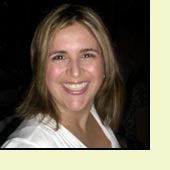A review of Good Food Baby from Glimpse:
It’s interesting (to say the least) how life keeps changing – I guess it’s to keep us on our toes, so we don’t start growing moss! 🙂 You’ve had a baby join your family, and just when you thought you had figured everything out, s/he changes it all on you! At least, that’s how it’s been going on around here.
One of the big changes, or developments we went through earlier this year is when Annalies was ready to start eating food. And she was really ready! She can’t say the word “FOOD” yet, but we sure do know when she’s asking for it!
I’m fortunate to have gone through this beginning eater stage already twice, but I remember how hard it was to figure out what to do the first time around. Of course, in the years since my first baby (and it’s not that long), guidelines and recommendations have changed several times, so it’s easy to understand why parents, especially new parents, are so confused. Advice from well-meaning people around can be helpful but can also add to the confusion. And, once you get the recommendations figured out, you still have to actually provide the food and get your baby to eat it!
Luckily for all you new parents out there, 2 Canadian Healthcare professionals have written a couple of books designed to help you wade through the guidelines. Ali Chernoff, R.D. and Chantel Canessa, M.N. realized that there is so much information out there, and their books are filled with practical tips and recipes.
We were given a copy of Good Food Baby to review. With pictures on many pages, as well as charts and lists, the information you’re seeking is easy to find and understand. Definitely a plus for parents with little extra time!
A strong point of the book is the tips on how and when to introduce solid foods. Along with the feeding tips, there is also a section that details how to cook certain categories of foods so they’re appropriate for baby. This section also helps you to figure out which method is best for preparing which food.
Something the book is really good on is explaining how things might be different for a baby with challenges such as Down syndrome. As well, there is a detailed section on food allergies and how to proceed with allergenic foods.
I would have liked to have seen a more detailed section on combined foods, for when baby has tried single ingredients foods. There are some good tips on how to combine foods to make a balanced meal, but I would have liked to have seen more recipes, or recipes with variations on how to modify the family meal to suit baby.
There is a chapter on what to look for when buying baby food, and I’m glad this is included. There are some good options out there, and there are some situations when homemade baby food just isn’t possible or practical. Like the time our outing took longer than planned, and I had a spoon in my diaper bag (standard) but no food. The grocery store was close, and I was able to pick up something quick that Annalies could enjoy, and that would keep her happy until we got home. Or when we went camping; with no refrigeration in our tent, it was impossible to bring along our homemade frozen baby food. I wish they had highlighted a Canadian brand of baby food though – the pictures in this section are of a good quality American brand, and as you all know, if you’ve been reading Glimpse for a while, there are some great Canadian options out there as well. (Note to American readers: I have nothing against the American brand, except it’s not available to us here!)
Once your baby is beyond the beginning eater stage, Ali and Chantel have another book of guidelines for you. Good Food Toddler includes tips on how to transition your child from one stage to the next, how to cope with eating issues such as Celiac disease, how to encourage a picky eater to eat and some menu planning guidelines including recipes.








